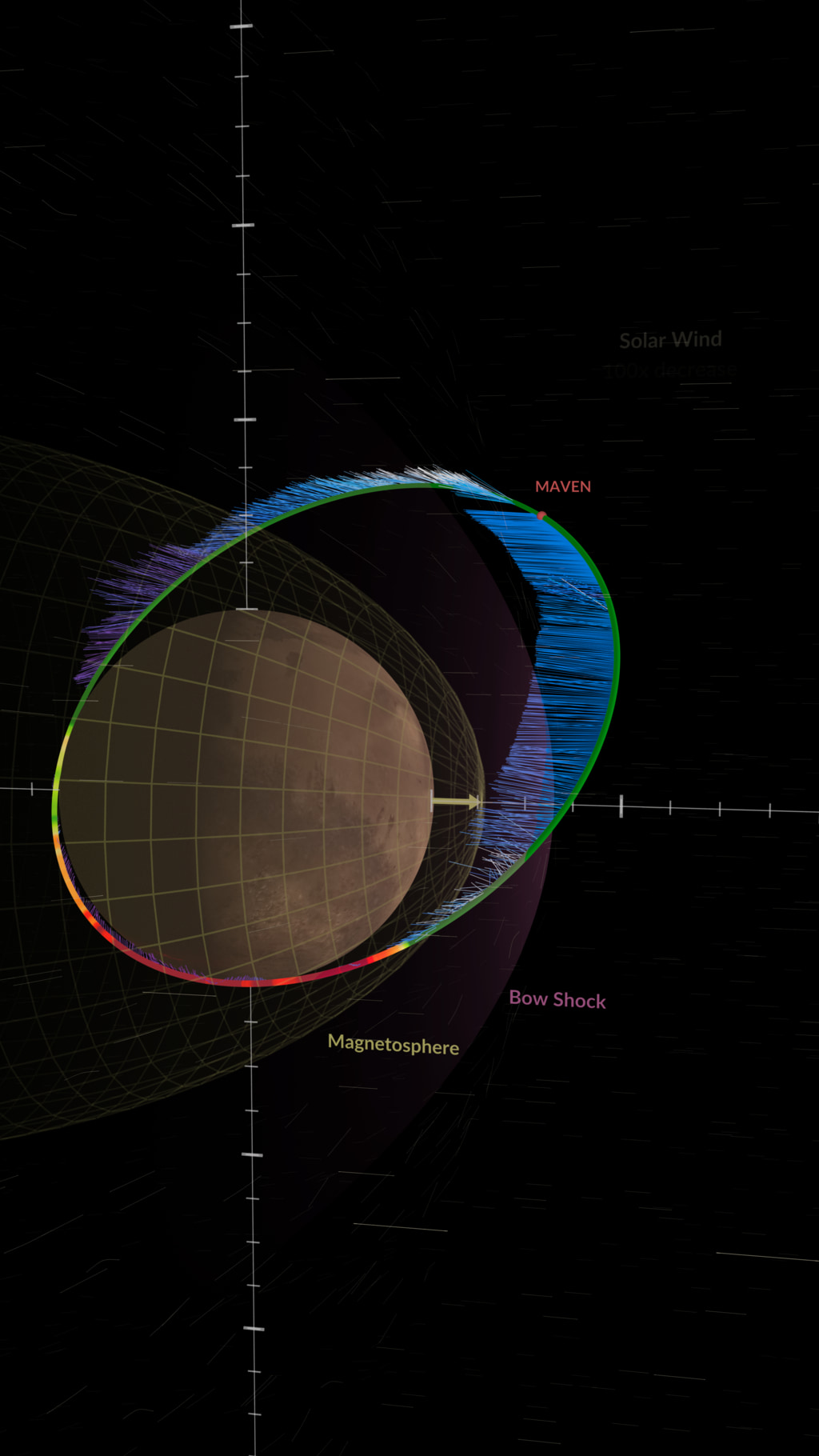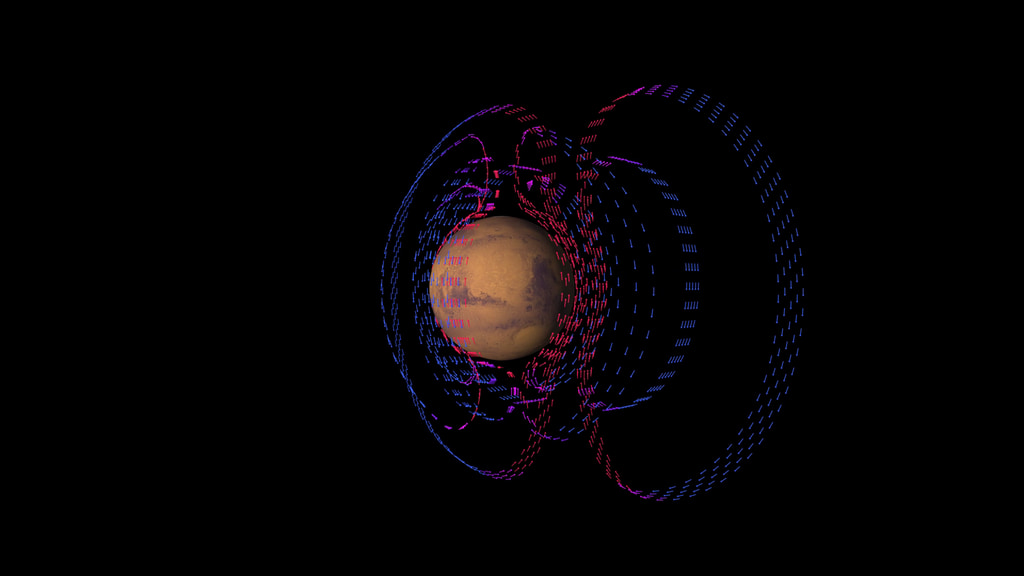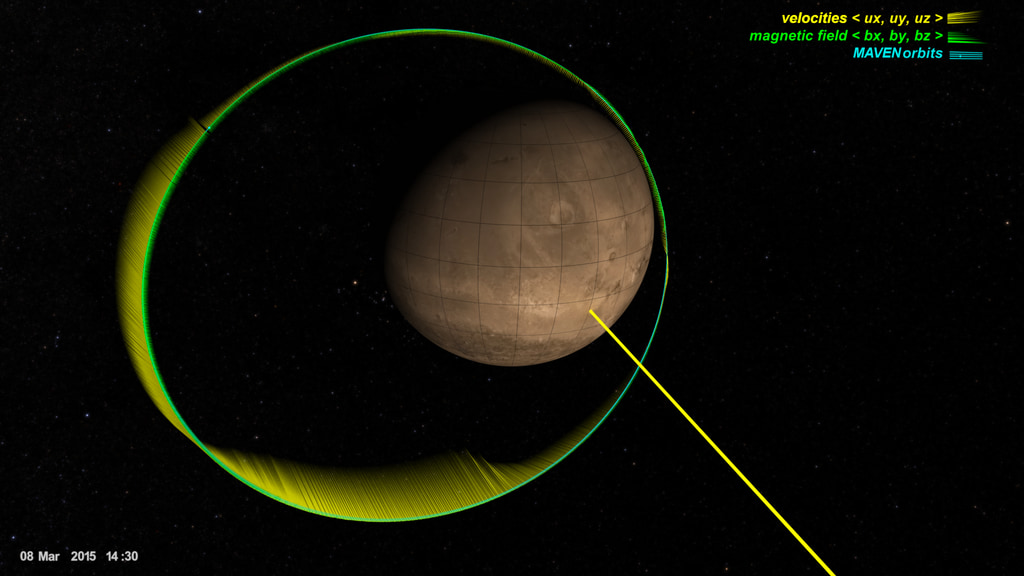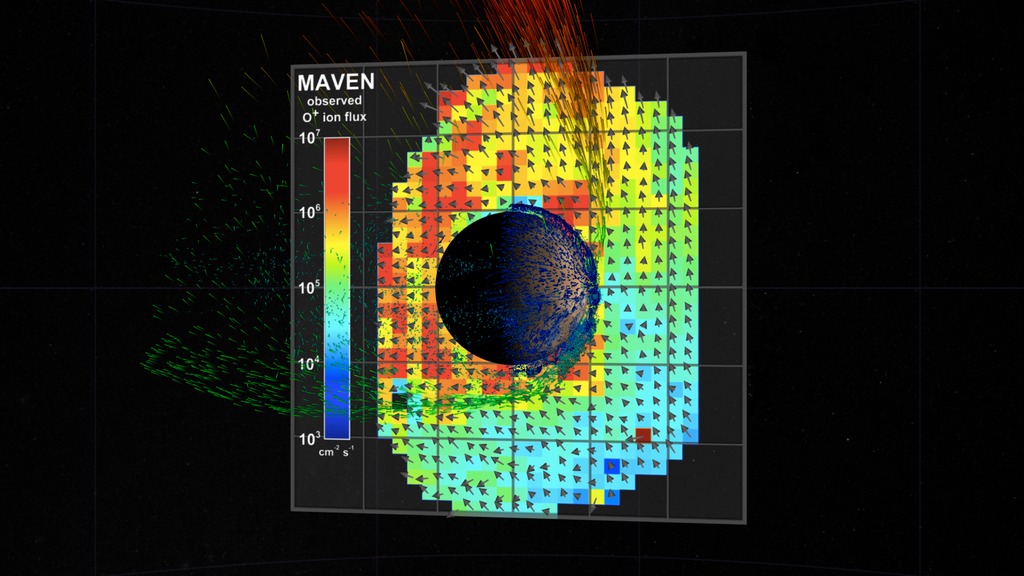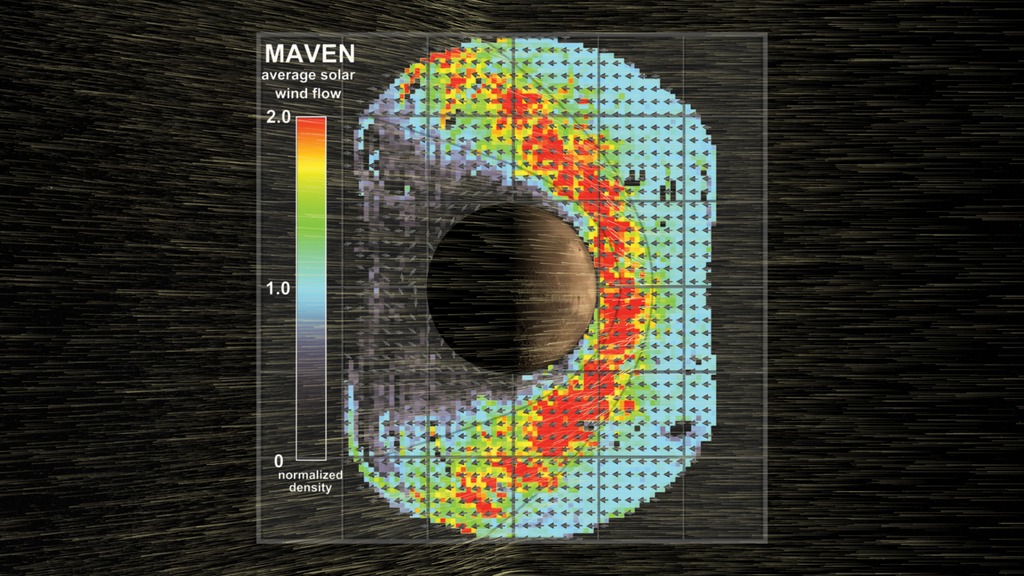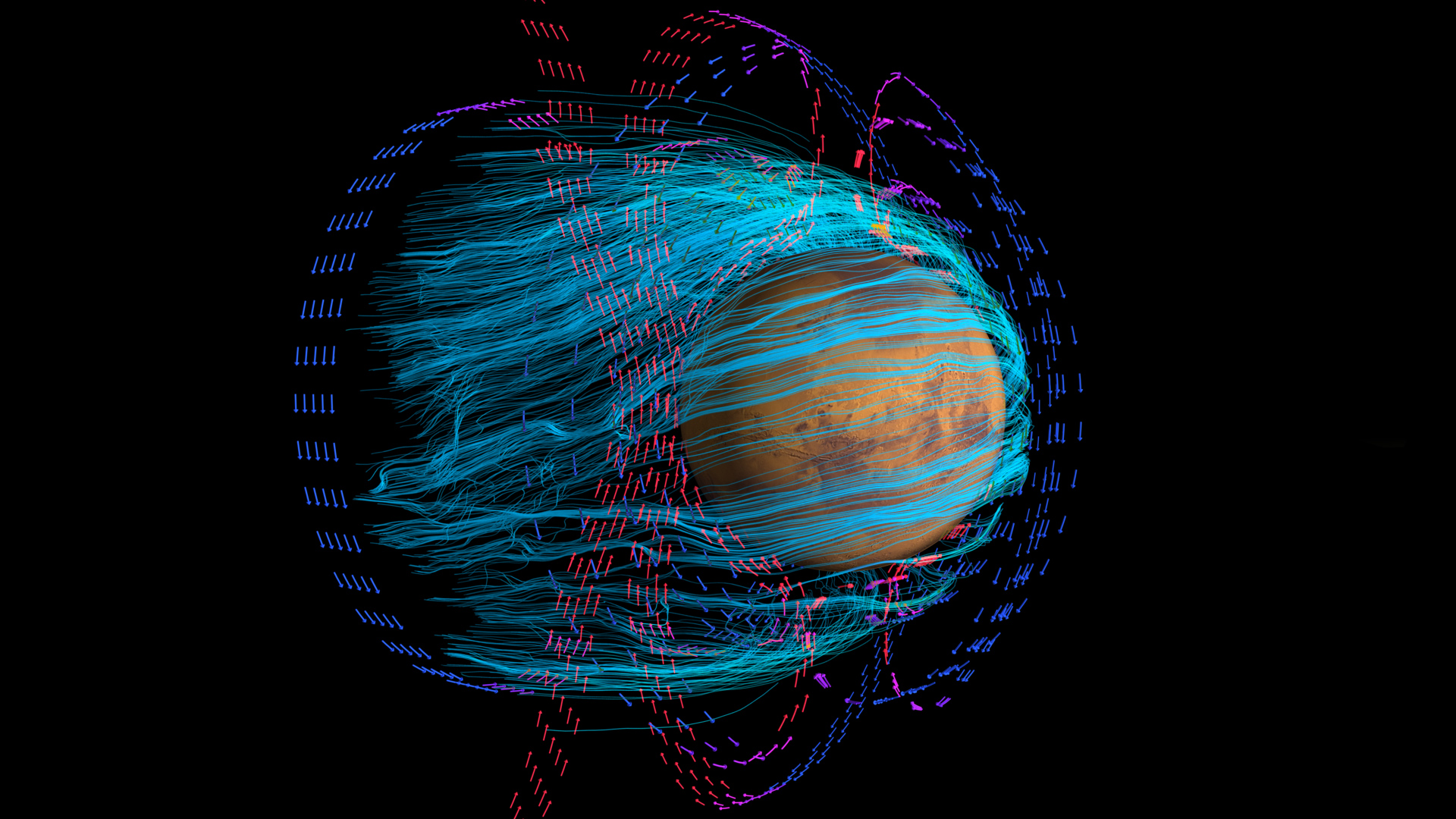MAVEN – Mars and Solar Wind Simulation
This simulation depicts the solar wind interacting with the Mars upper atmosphere, with MAVEN's orbit embedded.
The Mars Atmosphere and Volatile Evolution (MAVEN) spacecraft has been orbiting Mars since 2014, observing the planet’s upper atmosphere and its interaction with the solar wind in order to better understand the climate history of Mars. The solar wind is a stream of electrically charged particles blowing from the Sun at approximately one million miles per hour.
This visualization simulates charged particles (ions) in the Mars upper atmosphere interacting with the solar wind and escaping to space. Red and yellow particles represent high-velocity ions that escape the planet, while greens and blues represent low-velocity ions that remain bound to Mars. Time is frozen in the visualization, and a camera move reveals the structure of the system.
On Mars’ dayside, the ions follow the contours of the solar wind bow shock; on its nightside they are drawn into a long tail, with a complex internal structure driven by electrical current systems. MAVEN’s elliptical orbit is embedded within the cloud of escaping ions. In this visualization, MAVEN orbits nearly above the Martian terminator – the boundary between the planet’s dayside and its nightside – though the orbit also drifts slowly around Mars.
The solar wind has contributed to the erosion of the Martian atmosphere over time, which has gradually turned Mars from warm and wet to cold and dry. MAVEN is helping scientists to better understand the complex processes that have driven this transition, and which continue to affect the Martian climate today.
For More Information
See NASA.gov
Credits
Please give credit for this item to:
NASA's Scientific Visualization Studio
-
Visualizers
- Greg Shirah (NASA/GSFC)
- Horace Mitchell (NASA/GSFC)
-
Producer
- Dan Gallagher (USRA)
-
Scientists
- Yingjuan Ma (UCLA)
- David Brain (University of Colorado Boulder)
-
Technical support
- Laurence Schuler (ADNET Systems, Inc.)
- Ian Jones (ADNET Systems, Inc.)
Release date
This page was originally published on Monday, May 25, 2020.
This page was last updated on Wednesday, May 3, 2023 at 1:44 PM EDT.
Missions
This visualization is related to the following missions:Datasets used in this visualization
-
[MGS: MOC]
ID: 58 -
CelesTrak Spacecraft Orbit Ephemeris
ID: 454This dataset can be found at: http://celestrak.com
See all pages that use this dataset -
Tycho Catalogue (Tycho 2 Catalogue) [Hipparcos: Telescope]
ID: 550This dataset can be found at: http://archive.eso.org/ASTROM/
See all pages that use this dataset -
Magnetic Field Vectors [MAVEN: MAG]
ID: 1082
Note: While we identify the data sets used in these visualizations, we do not store any further details, nor the data sets themselves on our site.
